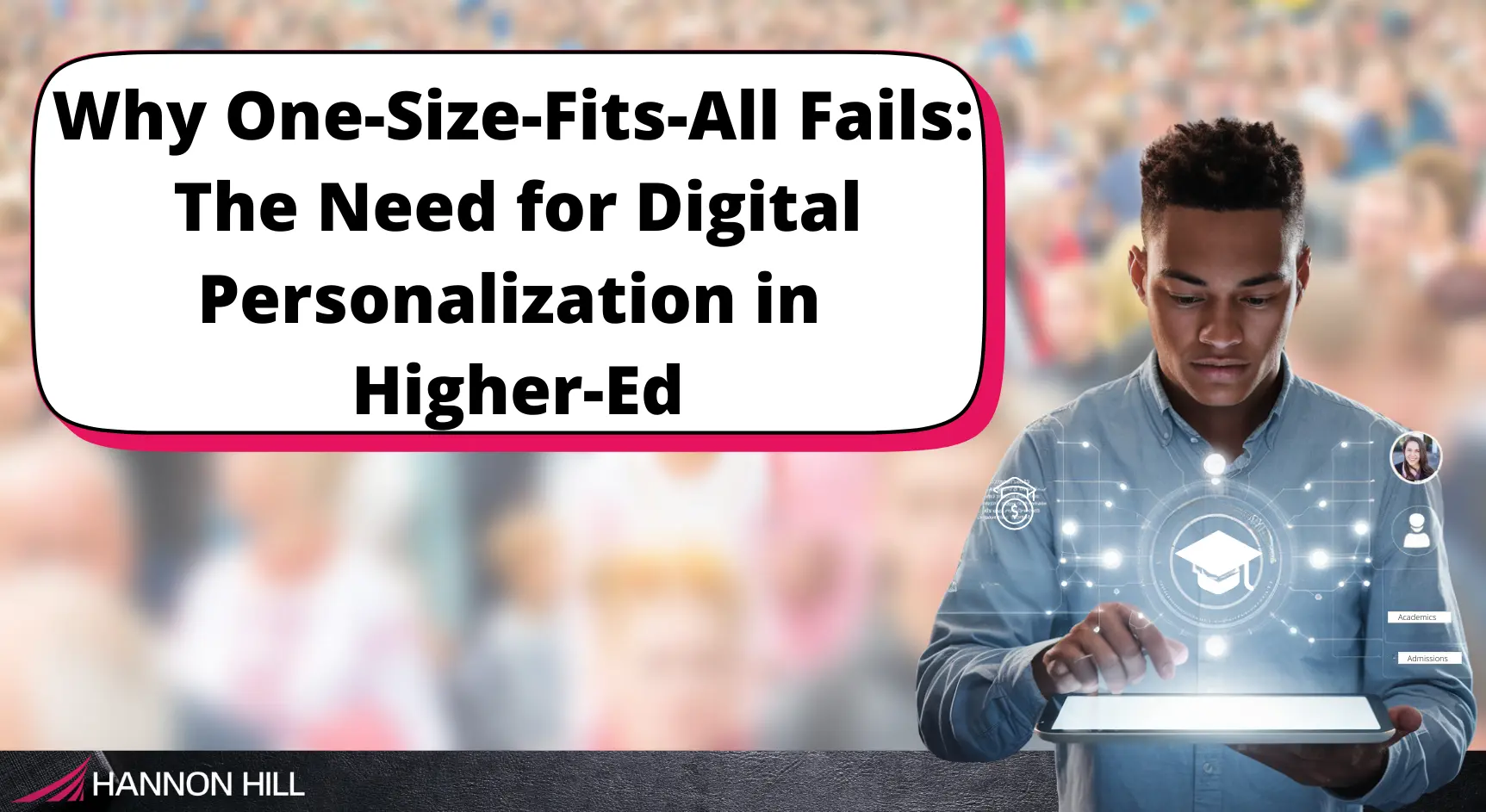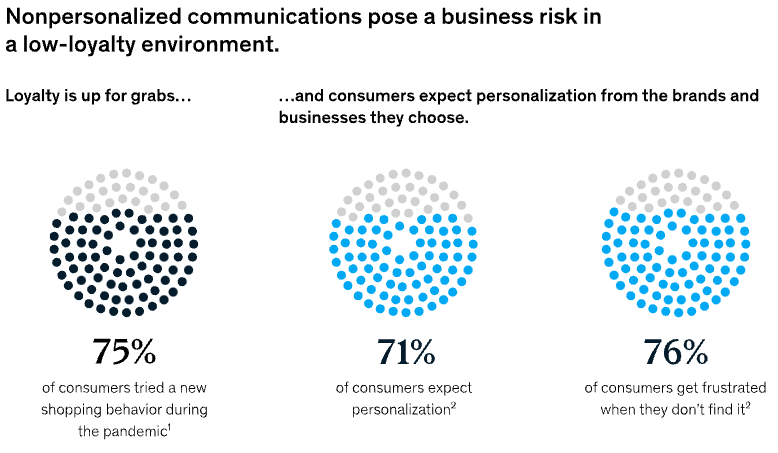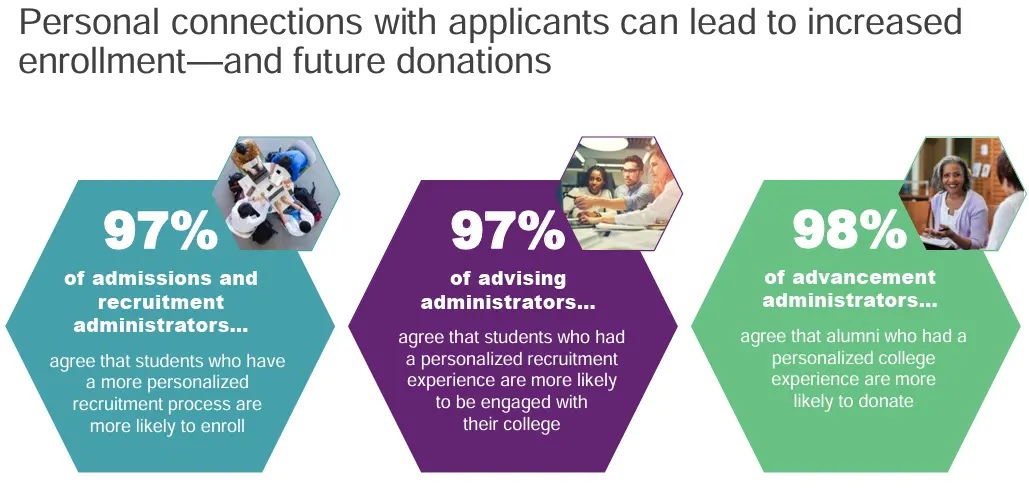
College enrollment is facing a major shift.
The long-anticipated enrollment cliff has arrived, signaling the start of a decline in the number of high school graduates, driven by falling birth rates over the past two decades.
At the same time, the Search Cliff is making recruitment even more challenging. Stricter digital privacy laws and the College Board’s shift to digital testing will shrink the pool of student names available for outreach by nearly 40% over the next four years.
With fewer students available and new obstacles in connecting with them, colleges and universities must rethink their outreach strategies and adopt more effective tools to engage the next generation of learners.
Recent high school graduates are increasingly weighing the return on investment of a college degree, leading to growing skepticism about the cost and long-term benefits of higher education.
This “Perception Cliff” means that institutions are not only competing against each other, they’re competing against the dwindling perception of the value of higher education.
In an increasingly competitive and uncertain admissions environment, one thing is certain:
Students expect to be seen as individuals, not as part of a demographic.
They’re looking for a university experience that aligns with their personal goals and interests, and their first interaction with your institution, your website, should reflect that.
Web personalization allows colleges and universities to deliver tailored experiences by dynamically adjusting content based on a visitor’s unique needs, preferences, and past interactions, creating a more meaningful and engaging digital experience.
The traditional higher education experience is no longer the default path for many students. As young adults are taking time off right after high school, the demographics of student bodies are shifting.
It is critical that marketing techniques adjust to reflect this change. Gone are the days when you could publish a course catalog with a generic photo of three students under a tree and call it “marketing.”
Students once labeled as “non-traditional” now represent a growing share of college enrollments. These include adult learners, part-time students, online degree seekers, and those returning to school after time away.
Some have military affiliations, are balancing education with full-time careers, or are seeking specialized credentials to advance in their fields.
Each of these students brings unique needs and expectations that institutions must address to support their success.
International students are another important group requiring tailored resources.
From navigating visa requirements, admission requirements, ESL support, and cultural and community support, these students benefit from clear, accessible guidance throughout the admissions and enrollment process.
Recognizing the diversity of today’s student body is essential.
Institutions that proactively identify these students early in their journey and provide them with the right information and support will be better positioned to engage and retain them.
Failing to engage non-traditional students in your marketing strategy could mean you will miss significant enrollment opportunities.
With the Enrollment Cliff, institutions that do not actively recruit and support these students risk declining enrollment numbers.
To remain competitive, be sure your messaging speaks directly to the distinct needs of diverse student populations, from initial outreach to enrollment, and from enrollment to graduation, offering clear pathways and resources tailored to their educational goals.
Personalized experiences, whether they are through your website or in person, are just as crucial for retaining current students as for recruiting new ones.
71% of website visitors expect companies to deliver personalized interactions, and 76% get frustrated when they don't receive a personalized experience.
 (source)
(source)
When your messaging feels generic or disconnected from their needs, students may disengage, making them more likely to seek a more tailored experience elsewhere.
By delivering relevant, personalized content, whether through academic advising, campus resources, or student engagement initiatives, you can foster a stronger sense of connection and support, increasing retention and student satisfaction.
As more colleges embrace personalized marketing, you risk losing prospective and current students if you stick to generic messaging.
According to Forrester Research, websites with personalized content see an average conversion rate increase of 63% compared to those without personalization.
Traditional, one-size-fits-all strategies won’t keep up in today’s competitive enrollment environment.
Instead of spreading your marketing budget too thin on broad campaigns, focus on personalized approaches that speak directly to students’ individual needs, thus ensuring stronger engagement, higher conversion rates, and better retention.
Ideally, your institution should utilize personalization across your entire web presence and all communications.
However, we recommend starting small and focusing on a few key areas where tailored messaging is essential for engaging both prospective and current students.
Recruitment Communications
Did you know that 97% of admission reps say that a personalized recruiting experience makes prospective students more likely to enroll, according to a study by Ellucian?
 (source)
(source)
You can start identifying key student groups as early as the recruitment phase. When a prospective student expresses interest in a particular program, deliver targeted messaging that speaks directly to their academic and career aspirations.
Customize content to highlight relevant career paths, showcase faculty expertise, and provide clear guidance on admissions and financial aid, helping them see how your institution aligns with their goals.
Website Experience
Any action a visitor takes on your website is an opportunity to personalize dynamic content to their interests. This can include targeted program recommendations, personalized calls to action, specific scholarship opportunities, testimonials from students similar to them, or even custom navigation.
You could also show different checklists for first-year students, transfer students, and graduate students.
Content Delivery
From the first inquiry to enrollment and beyond, every student should receive content tailored to their unique needs. This includes information relevant to their location, interests, and stage in the recruitment or enrollment process.
For example, you could show prospective students different videos, factoids, and calls to action (request information, take the next step, submit your application) based on the number of visits to your site.
The way students engage with colleges is evolving, and institutions that prioritize web personalization will be best positioned to attract and retain them.
Personalization is no longer a luxury but a necessity for creating meaningful connections with prospective and current students.
Hannon Hill’s web personalization tool, Clive, empowers institutions to deliver dynamic, real-time experiences tailored to each visitor.
By adapting content based on a student’s journey, whether through personalized calls to action, relevant testimonials, or targeted program pages, Clive helps prospective students envision themselves as part of your community.
Today’s students expect more than generic messaging. They want an experience that speaks to their unique goals and interests.
By embracing web personalization, you ensure that every interaction with your institution feels relevant, engaging, and impactful. One-size-fits-all marketing is no longer enough.
To learn more about how Cascade CMS and Clive Web Personalization can help your institution reach more students than ever before, reach out to our team.
Last Updated: Mar 13, 2025 11:00 AM